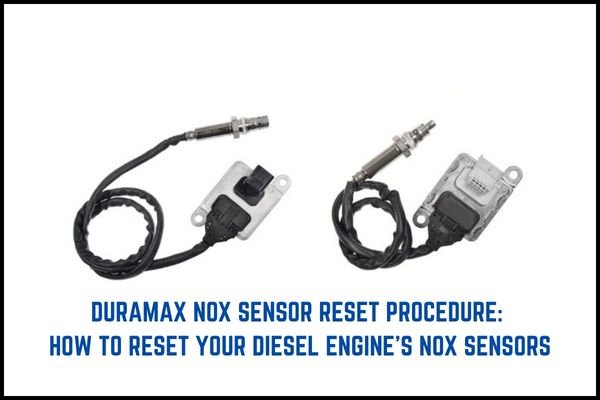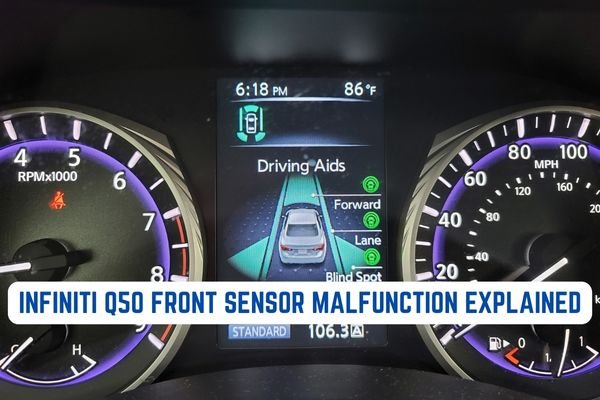What Does a Bad MAF Sensor Look Like? All You Need To Know
A bad MAF sensor exhibits irregular engine performance, decreased fuel efficiency, engine stalling or hesitation, illuminated check engine light, and trouble with acceleration. Visual indicators include physical damage, contamination, and loose wiring. Prompt diagnosis and repair are crucial for optimal engine performance.
The engine is the heart of your vehicle, and the Mass Airflow Sensor (MAF) plays a crucial role in its performance. The MAF sensor measures the amount of air entering the engine to ensure the proper air-to-fuel ratio for efficient combustion. Identifying a faulty MAF sensor is essential for maintaining optimal engine performance.
In this article, we will explore the telltale signs of a bad MAF sensor, how to visually inspect it, perform diagnostic tests, and take necessary steps for resolution.
Table of Contents
What are the Symptoms of a Bad MAF Sensor?
Irregular Engine Performance
A bad MAF sensor can cause irregular engine performance, making your vehicle feel sluggish or unresponsive. You may experience rough idling or surges during acceleration. These symptoms arise from incorrect air measurements, affecting the engine’s fuel delivery.
Decreased Fuel Efficiency
One of the noticeable effects of a malfunctioning MAF sensor is decreased fuel efficiency. If you find yourself visiting the gas station more frequently without any other apparent issues, the MAF sensor could be to blame.
Engine Stalling or Hesitation
A bad MAF sensor can lead to engine stalling or hesitation, especially during acceleration. This occurs when the sensor fails to provide accurate air measurements, causing disruptions in the engine’s performance.
Check Engine Light Illumination
The MAF sensor communicates with the vehicle’s onboard computer, and when it detects an issue, it triggers the dreaded check engine light. If you notice the check engine light is illuminated on your dashboard, it’s time to investigate the health of the MAF sensor.
Trouble with Acceleration
If your car struggles to accelerate smoothly or feels sluggish when you press the gas pedal, it could be a result of a bad MAF sensor. The engine is not receiving the right amount of air, affecting its ability to generate power efficiently.
What Does a Bad MAF Sensor Look Like Visually?

Physical Damage and Corrosion
Inspect the MAF sensor for any physical damage or signs of corrosion. Physical damage, such as cracks or dents on the sensor’s housing, may indicate a faulty unit. Additionally, look out for any signs of rust or corrosion that could affect its functionality.
Contaminated Sensor Elements
The MAF sensor’s delicate elements can become contaminated with dirt, oil, or debris over time. Visual inspection may reveal a buildup of contaminants, leading to inaccurate readings.
Loose or Disconnected Wiring
Ensure the MAF sensor’s wiring connections are secure and corrosion-free. Loose or disconnected wires can lead to erratic readings and poor engine performance.
Diagnostic Testing for a Bad MAF Sensor
Using OBD-II Scanner for Trouble Codes
When the check engine light is on, use an OBD-II scanner to retrieve trouble codes related to the MAF sensor’s performance. These codes provide valuable insights into the nature of the issue.
Analyzing MAF Sensor Voltage Readings
Testing the MAF sensor’s voltage readings with a multimeter can help determine if it is providing accurate data to the engine control unit (ECU). Comparing the readings to the manufacturer’s specifications is essential for diagnosing the problem.
Conducting a Smoke Test for Intake Leaks
A smoke test can identify potential leaks in the intake system that may affect the MAF sensor’s readings. Intake leaks can lead to an imbalance in the air-to-fuel ratio and adversely impact engine performance.
ICP Sensor 6.0 Powerstroke Symptoms; Well Explained
sensor diary
Potential Causes of MAF Sensor Issues
- Dirt and Contaminants
Accumulating dirt and contaminants on the MAF sensor can disrupt airflow measurements and lead to inaccurate readings. Regular cleaning can help prevent this issue.
- Wear and Tear over Time
Like any other component, the MAF sensor can experience wear and degradation over time, affecting its accuracy. Replacing a worn-out sensor can resolve performance issues.
- Electrical Problems
Electrical issues, such as damaged wiring or faulty connectors, can interfere with the MAF sensor’s operation. Careful inspection and proper repairs are necessary to address these issues.
- Other Faulty Engine Components
Issues with other engine components, such as the oxygen sensor or the fuel injectors, can indirectly affect the MAF sensor’s performance. A comprehensive diagnostic evaluation can identify these interconnected problems.
Addressing a Bad MAF Sensor
In some cases, cleaning the MAF sensor with a specialized cleaner can remove contaminants and restore its functionality. This is a simple and cost-effective solution.
Replacement is the most effective solution if the MAF sensor is severely damaged or beyond repair. Consult your vehicle’s manual or seek professional advice for compatible replacement options.
For accurate diagnosis and repair, it is best to consult a professional mechanic with experience in handling MAF sensor issues. They can perform comprehensive tests and provide appropriate solutions.
Conclusion
A bad MAF sensor can significantly impact your vehicle’s engine performance and fuel efficiency. Recognizing the symptoms and performing visual inspections and diagnostic tests are essential steps to identify the problem. Whether through cleaning, replacement, or seeking professional assistance, addressing a faulty MAF sensor ensures your car runs smoothly and efficiently, maintaining the joy of driving.




